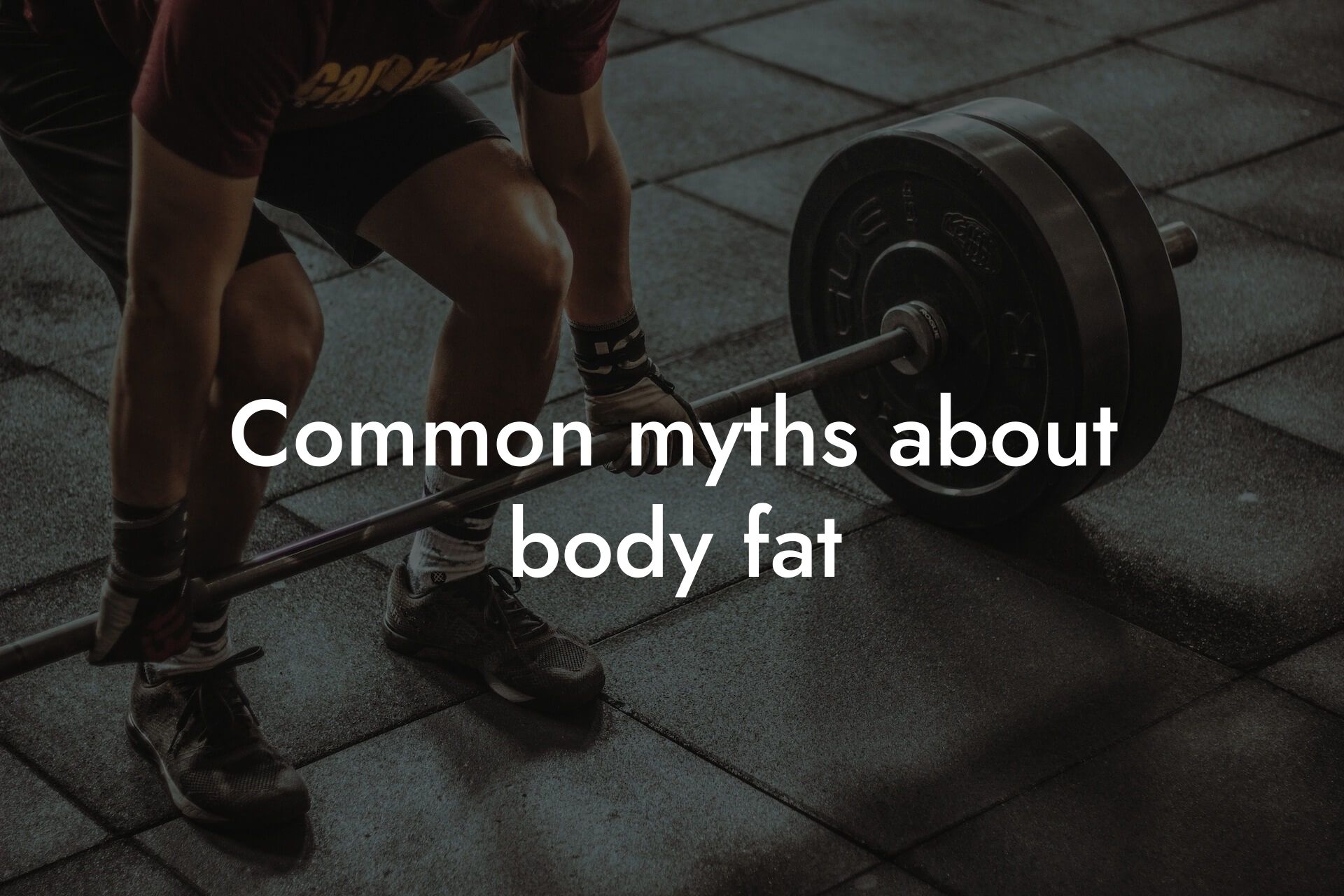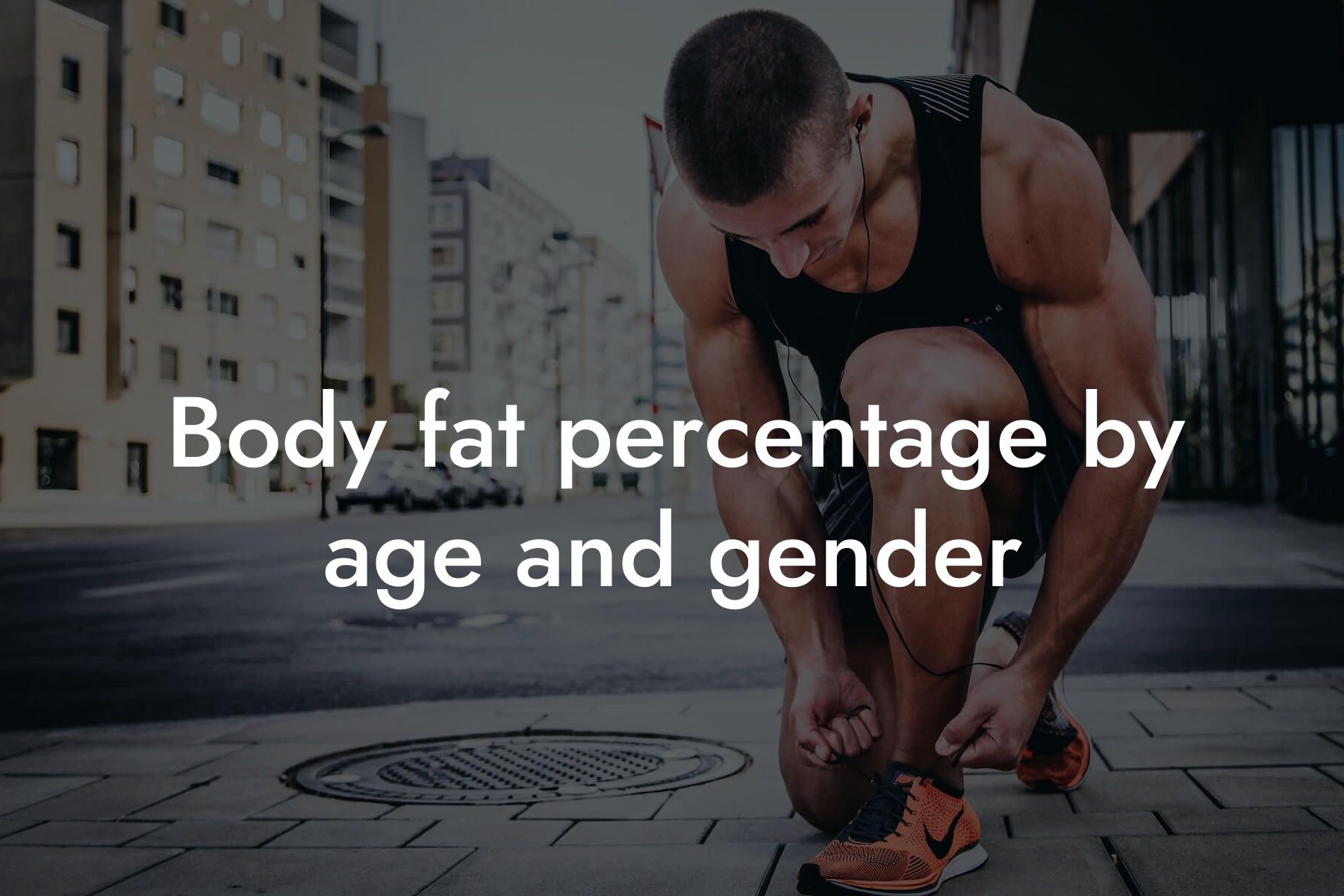As a high-earning professional, you understand the importance of maintaining a healthy and fit physique. Body fat measurement is a crucial aspect of achieving your fitness goals, as it provides valuable insights into your overall health and wellness. Measuring body fat can help you track your progress, identify areas for improvement, and make informed decisions about your diet and exercise routine. In this article, we'll delve into the different methods of measuring body fat, their accuracy, and what you need to know to take control of your physique.
Table of Contents
What Is Body Fat?
Body fat, also known as adipose tissue, is a type of connective tissue that stores energy in the form of fat. It's an essential component of our bodies, providing insulation, cushioning, and energy storage. However, excessive body fat can lead to various health problems, including obesity, diabetes, and cardiovascular disease. The ideal body fat percentage varies depending on age, gender, and athletic goals, but generally ranges from 10-20% for men and 15-25% for women.
Methods of Measuring Body Fat
There are several methods to measure body fat, each with its own advantages and limitations. Here are some of the most common methods:
1. Hydrostatic Weighing: This method involves weighing yourself underwater. Because fat is less dense than water, the weight difference between your dry weight and underwater weight can be used to estimate body fat percentage.
2. Dual-Energy X-ray Absorptiometry (DEXA): This method uses X-rays to measure bone density and body composition, including body fat percentage. DEXA is considered one of the most accurate methods, but it requires specialized equipment and training.
3. Skinfold Measurements: This method involves pinching the skin at specific points on the body to measure the thickness of the subcutaneous fat layer. Skinfold measurements are relatively inexpensive and easy to perform, but may not be as accurate as other methods.
4. Bioelectrical Impedance Analysis (BIA): This method uses a small device to send an electrical current through the body, measuring the resistance to estimate body fat percentage. BIA is quick and easy, but may not be as accurate as other methods, especially for athletes or individuals with a high muscle mass.
5. Body Mass Index (BMI): This method uses height and weight to estimate body fat percentage. BMI is a rough estimate and may not accurately reflect body composition, especially for athletes or individuals with a high muscle mass.
Accuracy of Body Fat Measurement Methods
The accuracy of body fat measurement methods varies depending on the method, equipment, and technician. Here's a general breakdown of the accuracy of each method:
1. DEXA: ±1-2% error margin
2. Hydrostatic Weighing: ±2-3% error margin
3. Skinfold Measurements: ±3-5% error margin
4. BIA: ±5-10% error margin
5. BMI: ±10-15% error margin
What to Look for in a Body Fat Measurement Method
When choosing a body fat measurement method, consider the following factors:
1. Accuracy: Look for methods with a low error margin, such as DEXA or hydrostatic weighing.
2. Convenience: Consider methods that are quick and easy to perform, such as BIA or skinfold measurements.
3. Cost: DEXA and hydrostatic weighing may be more expensive than other methods, while BIA and skinfold measurements may be more affordable.
4. Technician expertise: Ensure that the technician performing the measurement is trained and experienced to minimize errors.
Why DEXA Scans Are the Gold Standard
At Tano Performance Group, we use DEXA scans as our primary method of body fat measurement. DEXA scans offer unparalleled accuracy, convenience, and comprehensive data. With a DEXA scan, you'll receive a detailed report on your body composition, including:
1. Body fat percentage
2. Lean mass
3. Bone density
4. Visceral fat
5. Regional body fat distribution
Measuring body fat is a crucial aspect of achieving your fitness goals and maintaining overall health. By understanding the different methods of body fat measurement, their accuracy, and what to look for in a method, you can make informed decisions about your health and wellness. At Tano Performance Group, we're committed to providing high-earning professionals like you with the tools and expertise you need to take your physique to the next level. Contact us today to schedule your DEXA scan and take the first step towards a healthier, stronger you.
Get Started with Tano Performance Group
Ready to take control of your physique? Contact us today to schedule your DEXA scan and receive a comprehensive report on your body composition. Our team of experts will work with you to create a personalized fitness plan tailored to your goals and needs. Don't wait – take the first step towards a healthier, stronger you.
Frequently Asked Questions
What is body fat measurement, and why is it important?
Body fat measurement is the process of determining the amount of fat in your body. It's an important aspect of overall health and fitness, as excess body fat can increase the risk of chronic diseases like diabetes, heart disease, and certain types of cancer. Additionally, measuring body fat helps you track your progress towards your fitness goals, whether it's weight loss, muscle gain, or improving overall physique.
What are the different methods of measuring body fat?
There are several methods of measuring body fat, including Dual-Energy X-ray Absorptiometry (DXA), Hydrostatic Weighing, Skinfold Measurements, Bioelectrical Impedance Analysis (BIA), and Air Displacement Plethysmography (ADP). Each method has its own strengths and limitations, and the choice of method depends on individual needs and goals.
What is DXA, and how does it measure body fat?
Dual-Energy X-ray Absorptiometry (DXA) is a non-invasive method that uses X-rays to measure bone density and body composition, including fat mass and lean mass. It's considered one of the most accurate methods of measuring body fat, especially for tracking changes over time.
What is hydrostatic weighing, and how does it measure body fat?
Hydrostatic weighing is a method that measures body density by weighing you underwater. Because fat is less dense than water, the more body fat you have, the less you'll weigh underwater. This method is highly accurate but requires specialized equipment and can be time-consuming.
What are skinfold measurements, and how do they measure body fat?
Skinfeld measurements involve pinching the skin at specific points on the body to measure the thickness of the subcutaneous fat layer. This method is relatively inexpensive and easy to perform but can be affected by factors like skin elasticity and technician skill.
What is BIA, and how does it measure body fat?
Bioelectrical Impedance Analysis (BIA) is a non-invasive method that uses a small device to send an electrical current through the body. The resistance to this current is used to estimate body fat percentage. BIA is quick and easy but can be affected by factors like hydration levels and body temperature.
What is ADP, and how does it measure body fat?
Air Displacement Plethysmography (ADP) is a method that measures body volume by sitting in a sealed chamber that's flooded with air. The volume of air displaced is used to calculate body density and body fat percentage. ADP is highly accurate but requires specialized equipment.
How accurate are body fat measurement methods?
The accuracy of body fat measurement methods varies, with some methods being more accurate than others. DXA and hydrostatic weighing are generally considered the most accurate methods, while skinfold measurements and BIA may be less accurate due to various factors like technician skill and individual variability.
What is the ideal body fat percentage for men and women?
The ideal body fat percentage varies depending on age, sex, and athletic goals. Generally, for men, a body fat percentage of 8-19% is considered athletic, 14-24% is considered fitness, and 25-30% is considered average. For women, a body fat percentage of 16-23% is considered athletic, 20-30% is considered fitness, and 31-36% is considered average.
How often should I measure my body fat?
The frequency of body fat measurement depends on your individual goals and needs. If you're trying to lose weight or improve body composition, it's recommended to measure body fat every 4-6 weeks. If you're maintaining a healthy weight and body composition, measuring every 3-6 months may be sufficient.
What are the benefits of measuring body fat?
Measuring body fat provides valuable insights into your overall health and fitness, helping you track progress towards your goals, identify areas for improvement, and make informed decisions about your diet and exercise routine.
Can I measure body fat at home?
While it's possible to estimate body fat percentage at home using methods like BIA or skinfold measurements, these methods may not be as accurate as professional measurements. For accurate and reliable results, it's recommended to consult with a qualified healthcare professional or fitness expert.
How do I choose the right body fat measurement method for me?
When choosing a body fat measurement method, consider your individual needs and goals, as well as the accuracy and convenience of the method. It's also important to consult with a qualified healthcare professional or fitness expert to determine the best method for you.
What are the limitations of body fat measurement methods?
Each body fat measurement method has its own limitations, such as accuracy, cost, and accessibility. It's essential to understand these limitations to choose the right method for your needs and to interpret results accurately.
Can body fat measurement help with weight loss?
Yes, body fat measurement can be a valuable tool for weight loss. By tracking changes in body fat percentage, you can monitor the effectiveness of your diet and exercise routine and make adjustments as needed.
How does body fat measurement relate to overall health?
Excess body fat is a major risk factor for chronic diseases like diabetes, heart disease, and certain types of cancer. Measuring body fat helps you track your progress towards a healthy body composition, reducing the risk of these diseases.
Can body fat measurement help with athletic performance?
Yes, body fat measurement can be beneficial for athletes, as it helps them optimize their body composition for improved performance. By tracking changes in body fat percentage, athletes can fine-tune their training and nutrition plans to achieve their goals.
How does body fat measurement relate to bone density?
Body fat measurement is often used in conjunction with bone density measurements to provide a comprehensive picture of overall health. This is especially important for individuals at risk of osteoporosis or other bone-related disorders.
What are the benefits of tracking body fat percentage over time?
Tracking body fat percentage over time provides valuable insights into your progress towards your fitness goals, helping you identify areas for improvement, make informed decisions about your diet and exercise routine, and stay motivated and accountable.
Can body fat measurement help with physique goals?
Yes, body fat measurement is essential for achieving physique goals, such as building muscle or achieving a leaner appearance. By tracking changes in body fat percentage, you can monitor your progress and make adjustments to your diet and exercise routine as needed.
How does body fat measurement relate to overall physique?
Body fat measurement is a key component of overall physique, as it affects not only appearance but also athletic performance and overall health. By measuring body fat, you can gain a better understanding of your overall physique and make informed decisions about your fitness goals.
Here are some related articles you might love...
- Ideal body fat percentage for professionals
- Common myths about body fat
- Body fat percentage by age and gender
- How body fat impacts overall health
- Body fat distribution: What it means for your health
- How to lower body fat percentage safely
- Body fat vs muscle mass: What matters more?
- The relationship between body fat and productivity
- The role of diet in managing body fat
Zak Faulkner
Zak Faulkner is a leading authority in the realm of physical health and body composition analysis, with over 15 years of experience helping professionals optimise their fitness and well-being. As one the experts behind Tano Performance Group, Zak has dedicated his career to providing in-depth, science-backed insights that empower clients to elevate their physical performance and overall health.
With extensive knowledge of DEXA technology, Zak specializes in delivering comprehensive body assessments that offer precise data on body fat, muscle mass, bone density, and overall physique. His expertise enables individuals to make informed decisions and achieve their fitness goals with accuracy and confidence. Zak’s approach is rooted in a deep understanding of human physiology, combined with a passion for helping clients unlock their full potential through personalised strategies.
Over the years, Zak has earned a reputation for his commitment to excellence, precision, and client-focused service. His guidance is trusted by top professionals who demand the best when it comes to their health. Whether advising on fitness programs, nutritional strategies, or long-term wellness plans, Zak Faulkner’s insights are a valuable resource for anyone serious about taking their health and fitness to the next level.
At Tano Performance Group, Zak continues to lead our Content Team revolutionising how professionals approach their physical health, offering unparalleled expertise that drives real results.




